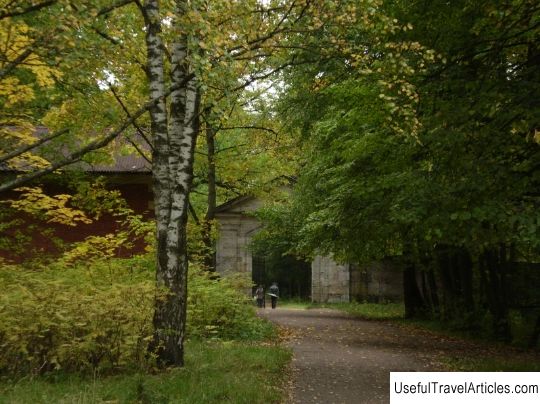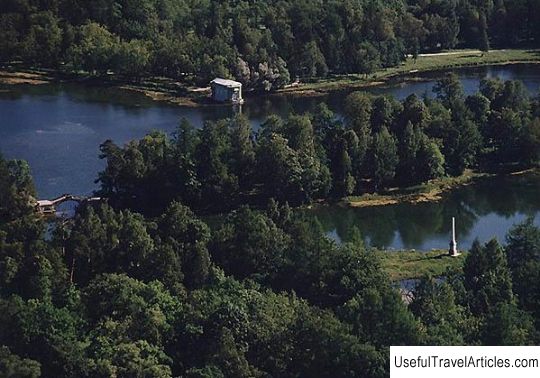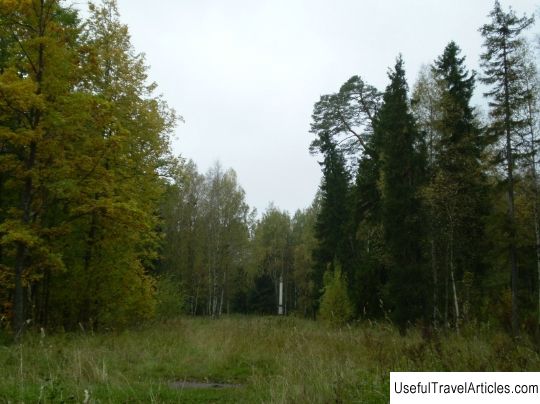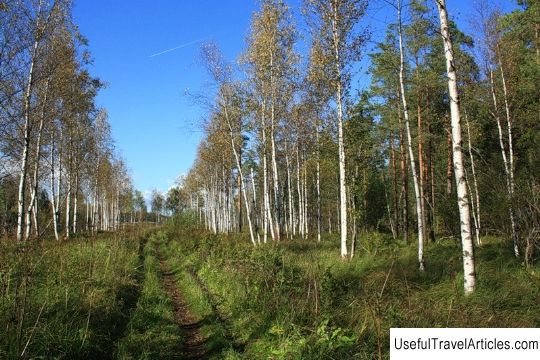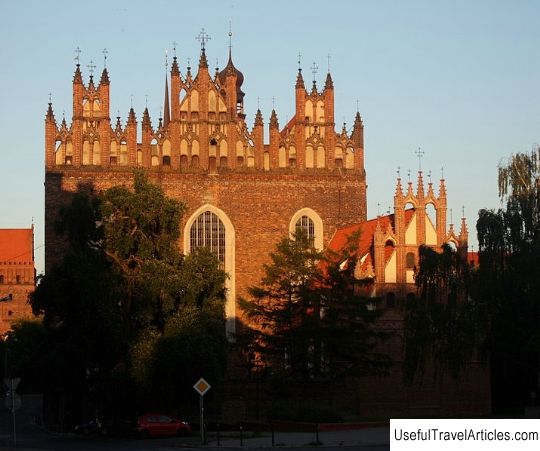Park Sylvia description and photo - Russia - Leningrad region: Gatchina
Rating: 8,1/10 (8764 votes) 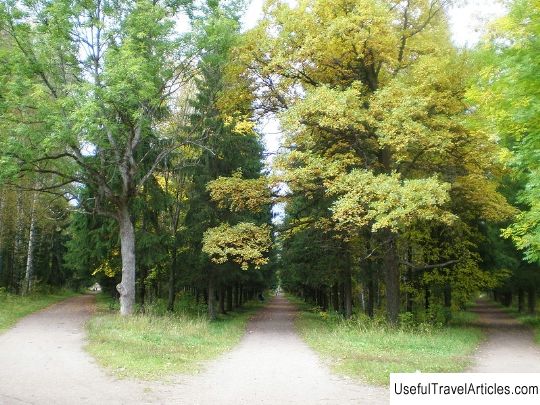
Sylvia Park description and photos - Russia - Leningrad region: Gatchina. Detailed information about the attraction. Description, photos and a map showing the nearest significant objects. Photo and descriptionSylvia Park is a part of the Palace Park in Gatchina. The name "Sylvia" comes from the Latin "silvia" - forest. This name of a part of the Palace Park is associated with Pavel Petrovich's travel abroad and a visit on June 10-12, 1782 to the French ensemble of Chantilly, where the park with the same name was located. Gatchina Sylvia was created in the period from 1792 to 1800. Its authors are the architect V. Brenna and the garden master J. Gekket. The park area is approximately 17.5 hectares. It is located northwest of the palace in the left-bank part of the Palace Park. Sylvia is separated from the Palace Park by a blank stone wall on one side, and on the other there is a conditional border, on which the remains of a wooden fence, as well as a modern metal fence, have survived. The layout of this romantic landscape park is based on the geometry and linearity that come from the regular baroque gardens. Sylvia's landscape was once enlivened by marble sculptures. One was a statue of a woman with her face covered with drapery. J.A. Matsulevich identified this statue as a lost work by A. Corradini, which was brought to Russia under Peter I. The grid, which is formed by the intersections of the alleys, was skillfully filled with details of the regular style. There were bosquets, labyrinths, spiral, radial-concentric, rectangular platforms, which were located in the corners of the bosquets, at the ends of perpendicular paths and on a common axis. V. Brenna and J. Hackett strove to make maximum use of the entire arsenal of layouts of regular gardens in the Baroque style. The central radial alley of the park leads to the Kolpanke River. The complex of the former Dairy Farm is located on its right bank. Farm buildings and whole parks were in many large palace and park ensembles of the 18-19th centuries. The farm was created by A.A. Menelas in Tsarskoe Selo, A.N. Voronikhin in Pavlovsk. On the other side of the river, opposite the Farm Pavilion, there is another building called the Poultry House, which was badly damaged during the fire of 1983. The appeal of architects who worked in country residences to the theme of rural buildings is not accidental: erecting "simple" buildings , the owners of the estates tried to create a kind of illusion of unity with natural, natural life and rural life. On such farms, thoroughbred cattle were kept, which were looked after by a whole staff of cattlemen, shepherds, milkmaids, who provided the owners with quality dairy products. The enlightened owners made their "rural buildings" look like palace pavilions. Not far from the pavilions of the Farm and the Poultry House on the river, a bridge, a dam with a cascade, and the Naumachia pool have been preserved in a ruined state. The key to Sylvia's composition is the Sylvian Gate, they serve as an invitation to the park. They are located in the middle of the wall, which is equal to the width of the park. From here, the perspectives of three fanning alleys open up, which are directed towards the Kolpanka River. The left alley leads to the Black Gate, the right one leads towards the Birdhouse in the depths of the park, and the middle one leads to the Farmer Complex. Near the stone wall not far from the Silvian Gate, there is a monument to the heroes of the Komsomol, 25 underground workers who heroically died on June 30, 1942. Near the place of their execution, a stone stele with the names of the fallen and a memorial inscription is issued from the wall. Wrought iron branches with drooping leaves and a wreath overshadow the list of heroes, symbolizing grief and memory of the torn lives of young people. Next to the wall is a bronze figure of a girl, who thoughtfully bowed a flower over the grave of her peers. The authors of the monument are the architect V.S. Vasilkovsky and sculptors A.A. King and V.S. Ivanov. The monument was opened on October 25, 1968, to the 50th anniversary of the Komsomol.       We also recommend reading Casa de la Canonya description and photos - Spain: Barcelona Topic: Park Sylvia description and photo - Russia - Leningrad region: Gatchina. |
